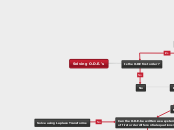by James LaBlanc 12 years ago
326
Ch. 4 Polynomial Writing Project
When solving polynomials, the given zeros dictate the approach. If a complex zero like (1 + i) is provided, its conjugate (1 - i) is also a zero. Factors are set up using these zeros and a variable '









